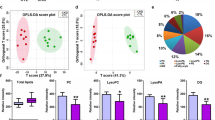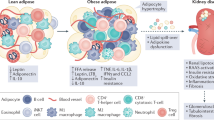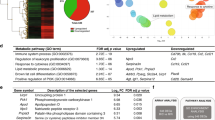Abstract
Aim:
Lipolysis in fat tissue plays an important role in the development of metabolic disturbances, a characteristic feature of chronic kidney disease (CKD). In the present study, we tested the hypothesis that the inhibition of endoplasmic reticulum (ER) stress could alleviate lipolysis in white adipose tissue in a rat model of CKD.
Methods:
A rat model of CKD was established by a method of reduced renal mass (RRM). Lipolysis was measured as the release of glycerol in ex vivo fat pads and cultured primary adipocytes. The activity of lipases and markers of ER stress were measured by Western blotting and immunoprecipitation.
Results:
Our data showed that lipolysis in visceral white adipose tissue was increased in RRM rats compared with control rats. In addition, increased phosphorylation of hormone-sensitive lipase (HSL) and binding of adipose triglyceride lipase (ATGL) to comparative gene identification-58 (CGI-58) protein were observed in the RRM rats. The phosphorylation of ER stress markers, including IRE1α, PERK, and eukaryotic initiation factor (eIF) 2α, and the expression of ER stress marker 78 kDa glucose-regulated protein (GRP78) were significantly increased in RRM rats. Treatment with an inhibitor of ER stress partially but significantly alleviated lipolysis, and this alleviation was accompanied by reduced binding of ATGL to CGI-58.
Conclusion:
Our results showed that enhanced lipolysis and ER stress occurred in visceral white adipose tissue in a rat model of CKD. Moreover, inhibition of ER stress significantly alleviated lipolysis. These findings suggest that ER stress is a potential therapeutic target for the metabolic disturbances associated with CKD.
Similar content being viewed by others
Log in or create a free account to read this content
Gain free access to this article, as well as selected content from this journal and more on nature.com
or
References
Fouque D, Kalantar-Zadeh K, Kopple J, Cano N, Chauveau P, Cuppari L, et al. A proposed nomenclature and diagnostic criteria for protein-energy wasting in acute and chronic kidney disease. Kidney Int 2008; 73: 391–8.
Keane WF, Tomassini JE, Neff DR . Lipid abnormalities in patients with chronic kidney disease. Contrib Nephrol 2011; 171: 135–42.
Ruan XZ, Moorhead JF, Varghese Z . Lipid redistribution in renal dysfunction. Kidney Int 2008; 74: 407–9.
Aminzadeh MA, Pahl MV, Barton CH, Doctor NS, Vaziri ND . Human uraemic plasma stimulates release of leptin and uptake of tumour necrosis factor-alpha in visceral adipocytes. Nephrol Dial Transplant 2009; 24: 3626–31.
Axelsson J, Astrom G, Sjolin E, Qureshi AR, Lorente-Cebrian S, Stenvinkel P, et al. Uraemic sera stimulate lipolysis in human adipocytes: role of perilipin. Nephrol Dial Transplant 2011; 26: 2485–91.
Kalbacher E, Koppe L, Zarrouki B, Pillon NJ, Fouque D, Soulage CO . Human uremic plasma and not urea induces exuberant secretion of leptin in 3T3-L1 adipocytes. J Ren Nutr 2011; 21: 72–5.
Wang S, Soni KG, Semache M, Casavant S, Fortier M, Pan L, et al. Lipolysis and the integrated physiology of lipid energy metabolism. Mol Genet Metab 2008; 95: 117–26.
Rhee EP, Souza A, Farrell L, Pollak MR, Lewis GD, Steele DJ, et al. Metabolite profiling identifies markers of uremia. J Am Soc Nephrol 2010; 21: 1041–51.
Zhou QG, Zhou M, Hou FF, Peng X . Asymmetrical dimethylarginine triggers lipolysis and inflammatory response via induction of endoplasmic reticulum stress in cultured adipocytes. Am J Physiol Endocrinol Metab 2009; 296: E869–78.
Kalantar-Zadeh K, Kuwae N, Wu DY, Shantouf RS, Fouque D, Anker SD, et al. Associations of body fat and its changes over time with quality of life and prospective mortality in hemodialysis patients. Am J Clin Nutr 2006; 83: 202–10.
Basseri S, Austin RC . Endoplasmic reticulum stress and lipid metabolism: mechanisms and therapeutic potential. Biochem Res Int 2012; 2012: 841362.
Gregor MF, Hotamisligil GS . Thematic review series: adipocyte biology. Adipocyte stress: the endoplasmic reticulum and metabolic disease. J Lipid Res 2007; 48: 1905–14.
Boden G, Duan X, Homko C, Molina EJ, Song W, Perez O, et al. Increase in endoplasmic reticulum stress-related proteins and genes in adipose tissue of obese, insulin-resistant individuals. Diabetes 2008; 57: 2438–44.
Ozcan U, Cao Q, Yilmaz E, Lee AH, Iwakoshi NN, Ozdelen E, et al. Endoplasmic reticulum stress links obesity, insulin action, and type 2 diabetes. Science 2004; 306: 457–61.
Hirosumi J, Tuncman G, Chang L, Gorgun CZ, Uysal KT, Maeda K, et al. A central role for JNK in obesity and insulin resistance. Nature 2002; 420: 333–6.
Deng J, Liu S, Zou L, Xu C, Geng B, Xu G . Lipolysis response to endoplasmic reticulum stress in adipose cells. J Biol Chem 2012; 287: 6240–9.
Cybulsky AV . Endoplasmic reticulum stress in proteinuric kidney disease. Kidney Int 2010; 77: 187–93.
Zhou QG, Fu XJ, Xu GY, Cao W, Liu HF, Nie J, et al. Vascular insulin resistance related to endoplasmic reticulum stress in aortas from a rat model of chronic kidney disease. Am J Physiol Heart Circ Physiol 2012; 303: H1154–65.
Huang ZH, Reardon CA, Mazzone T . Endogenous ApoE expression modulates adipocyte triglyceride content and turnover. Diabetes 2006; 55: 3394–402.
Gaidhu MP, Anthony NM, Patel P, Hawke TJ, Ceddia RB . Dysregulation of lipolysis and lipid metabolism in visceral and subcutaneous adipocytes by high-fat diet: role of ATGL, HSL, and AMPK. Am J Physiol Cell Physiol 2010; 298: C961–71.
Lass A, Zimmermann R, Oberer M, Zechner R . Lipolysis — a highly regulated multi-enzyme complex mediates the catabolism of cellular fat stores. Prog Lipid Res 2011; 50: 14–27.
Zechner R, Kienesberger PC, Haemmerle G, Zimmermann R, Lass A . Adipose triglyceride lipase and the lipolytic catabolism of cellular fat stores. J Lipid Res 2009; 50: 3–21.
Ryden M, Jocken J, van Harmelen V, Dicker A, Hoffstedt J, Wiren M, et al. Comparative studies of the role of hormone-sensitive lipase and adipose triglyceride lipase in human fat cell lipolysis. Am J Physiol Endocrinol Metab 2007; 292: E1847–55.
Lass A, Zimmermann R, Haemmerle G, Riederer M, Schoiswohl G, Schweiger M, et al. Adipose triglyceride lipase-mediated lipolysis of cellular fat stores is activated by CGI-58 and defective in Chanarin-Dorfman Syndrome. Cell Metab 2006; 3: 309–19.
Ozcan U, Yilmaz E, Ozcan L, Furuhashi M, Vaillancourt E, Smith RO, et al. Chemical chaperones reduce ER stress and restore glucose homeostasis in a mouse model of type 2 diabetes. Science 2006; 313: 1137–40.
Zechner R, Zimmermann R, Eichmann TO, Kohlwein SD, Haemmerle G, Lass A, et al. FAT SIGNALS — lipases and lipolysis in lipid metabolism and signaling. Cell Metab 2012; 15: 279–91.
Arner P, Bernard S, Salehpour M, Possnert G, Liebl J, Steier P, et al. Dynamics of human adipose lipid turnover in health and metabolic disease. Nature 2011; 478: 110–3.
Frayn K, Bernard S, Spalding K, Arner P . Adipocyte triglyceride turnover is independently associated with atherogenic dyslipidemia. J Am Heart Assoc 2012; 1: e 003467.
Roubicek T, Bartlova M, Krajickova J, Haluzikova D, Mraz M, Lacinova Z, et al. Increased production of proinflammatory cytokines in adipose tissue of patients with end-stage renal disease. Nutrition 2009; 25: 762–8.
Pelletier CC, Koppe L, Croze ML, Kalbacher E, Vella RE, Guebre-Egziabher F, et al. White adipose tissue overproduces the lipid-mobilizing factor zinc alpha2-glycoprotein in chronic kidney disease. Kidney Int 2013; 83: 878–86.
Lafontan M, Langin D . Lipolysis and lipid mobilization in human adipose tissue. Prog Lipid Res 2009; 48: 275–97.
Granneman JG, Moore HP, Granneman RL, Greenberg AS, Obin MS, Zhu Z . Analysis of lipolytic protein trafficking and interactions in adipocytes. J Biol Chem 2007; 282: 5726–35.
Zhou QG, Zhou M, Lou AJ, Xie D, Hou FF . Advanced oxidation protein products induce inflammatory response and insulin resistance in cultured adipocytes via induction of endoplasmic reticulum stress. Cell Physiol Biochem 2010; 26: 775–86.
Acknowledgements
This work was supported by the National Natural Science Foundation of China (No 81070613 and 81270827) and the Research Fund for the Doctoral Program (No 20104433120004).
Author information
Authors and Affiliations
Corresponding author
Rights and permissions
About this article
Cite this article
Zhu, Y., Chen, Yl., Li, C. et al. The effect of inhibition of endoplasmic reticulum stress on lipolysis in white adipose tissue in a rat model of chronic kidney disease. Acta Pharmacol Sin 35, 356–362 (2014). https://doi.org/10.1038/aps.2013.177
Received:
Accepted:
Published:
Issue date:
DOI: https://doi.org/10.1038/aps.2013.177
Keywords
This article is cited by
-
PKA/ATGL signaling pathway is involved in ER stress-mediated lipolysis in adipocytes of grass carp (Ctenopharyngodon idella)
Fish Physiology and Biochemistry (2022)
-
Metrnl: a secreted protein with new emerging functions
Acta Pharmacologica Sinica (2016)



